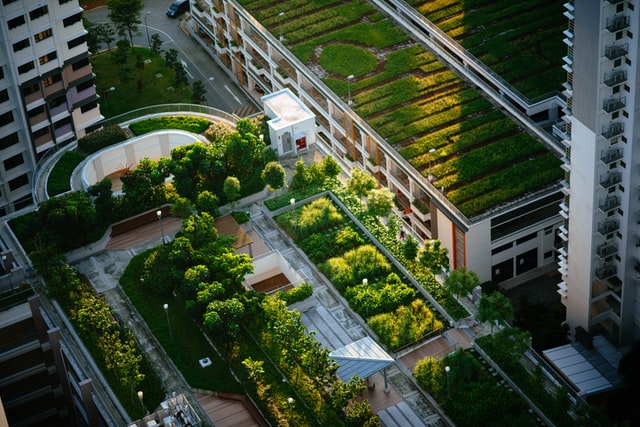Bio-inspired infrastructure represents an innovative approach to enhancing urban resilience by drawing inspiration from nature’s design principles and ecosystems. This article explores how bio-inspired solutions can be integrated into urban infrastructure to mitigate disaster risks, improve environmental sustainability, and promote resilience in the face of urban challenges.
Biophilic Design in Architecture
Biophilic design principles integrate natural elements, patterns, and materials into urban architecture to create spaces that promote human well-being and connection with nature. Features such as green roofs, living walls, and natural lighting enhance indoor air quality, reduce stress, and improve mental health for urban residents, contributing to the overall resilience and sustainability of urban environments.
Biomimetic Engineering for Structural Resilience
Biomimetic engineering applies biological principles and processes to design resilient and adaptive structures that mimic nature’s resilience mechanisms. Examples include resilient building materials inspired by the structure of seashells, self-healing concrete inspired by the healing abilities of bones, and flexible structures inspired by the biomechanics of trees, all of which enhance the resilience of urban infrastructure to natural disasters and environmental stresses.
Green Infrastructure for Urban Water Management
Green infrastructure solutions inspired by natural water systems help manage stormwater, reduce flooding, and improve water quality in urban environments. Bio-inspired features such as bioswales, rain gardens, and constructed wetlands mimic natural water filtration processes, providing natural flood control, habitat creation, and water purification services that enhance urban resilience to water-related hazards and climate change impacts.
Urban Biodiversity Corridors
Urban biodiversity corridors create interconnected green spaces and wildlife habitats that promote biodiversity conservation, ecological resilience, and human well-being in urban areas. These corridors, inspired by natural migration routes and ecological corridors in ecosystems, enhance urban resilience by providing habitat for wildlife, supporting pollinators, and improving urban ecosystem services such as air purification, carbon sequestration, and climate regulation.
Mimicking Natural Ecosystems for Urban Agriculture
Urban agriculture practices inspired by natural ecosystems promote food security, community resilience, and sustainable urban development. Agroecological approaches such as permaculture and food forests mimic natural ecosystems to create diverse and resilient urban food systems that improve soil health, conserve water, and enhance biodiversity while providing nutritious food for urban residents, thus enhancing urban resilience to food-related challenges and disruptions.
Ecological Urban Planning and Design
Ecological urban planning and design integrate bio-inspired principles into urban planning processes to create resilient, adaptive, and sustainable urban environments. By prioritizing green spaces, biodiversity conservation, and natural resource management, ecological urban planning promotes resilience to climate change impacts, enhances ecosystem services, and improves quality of life for urban residents, ensuring sustainable and resilient urban development in the face of urbanization pressures and environmental challenges.

